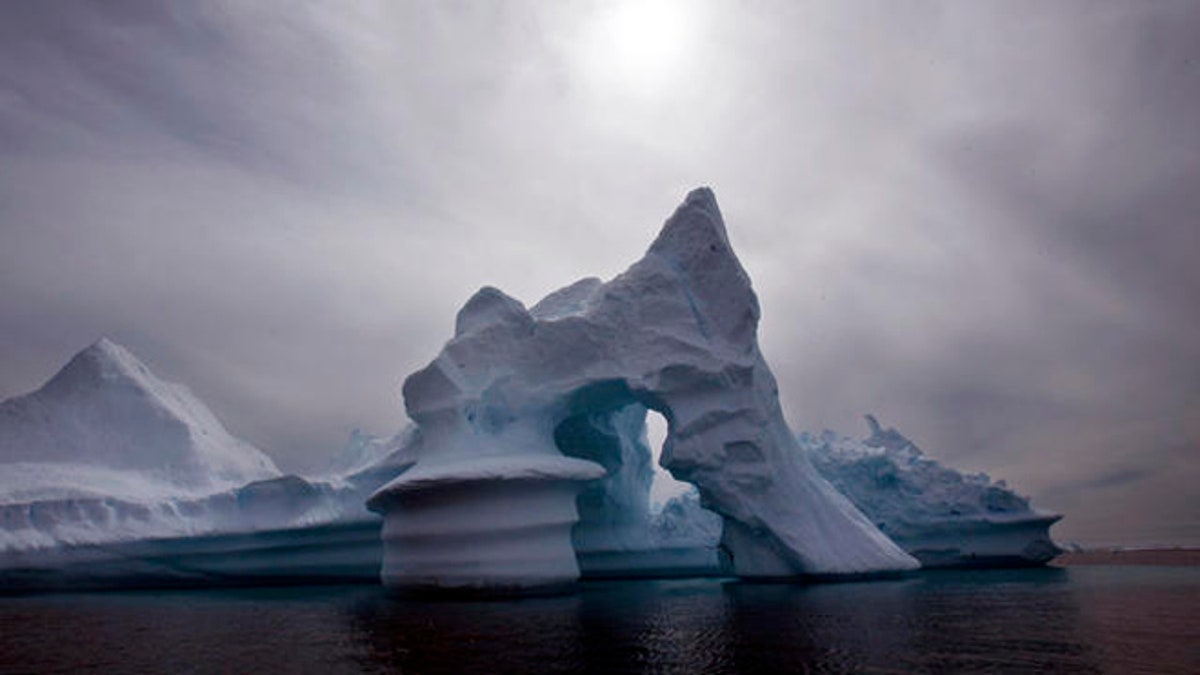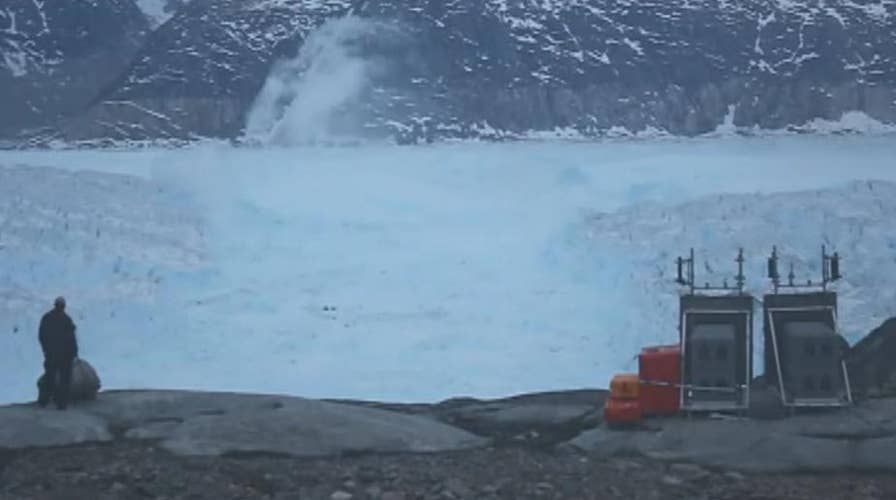Four-mile iceberg breaks away from a glacier in Greenland
Raw Video: NYU scientists capture video of a four-mile iceberg breaking away from a glacier in Greenland.
The oldest and thickest sea ice in the Arctic has begun to break up, opening waters that are normally frozen, researchers say.
This type of incident, which has not been recorded before, has happened twice this year due to warmer winds and what scientists call a climate-change driven heat wave in Earth’s northern hemisphere, according to the Guardian.
The sea ice off the north coast of Greenland has been impacted by abnormal temperature spikes in February and earlier this month, reports the U.K. publication, which have pushed the ice further away from the coast than at any time since satellite records began in the 1970s.
MELTING ARCTIC COULD RAPIDLY UNLOCK 'DEEP CARBON' BURIED IN PERMAFROST

For the first time, the strongest Arctic ice has begun to break off, scientists say. (AP)
Walt Meier, a senior research scientist at the US National Snow and Ice Data Center, told the British publication: “The ice there has nowhere else to go so it piles up. On average, it’s over four meters thick and can be piled up into ridges 20 meters thick or more. This thick, compacted ice is generally not easily moved around.”
“However, that was not the case this past winter (in February and March) and now. The ice is being pushed away from the coast by the winds,” he added.
Thomas Levergne, a scientist at the Norwegian Meteorological Institute, called the phenomenon “scary” in a retweet of a satellite GIF of blue water penetrating white ice and exposing miles of the Greenland coastline.
The Norwegian Ice Service said that the Svalbard sea ice area for Tuesday is at 43,231 square miles, which is 44,775 square miles below the average from 1981 to 2010 and it’s the lowest area for this day of the year dating back to 1967.
The Kap Morris Jesup weather station in the region, where the temperate is usually -4 degrees Fahrenheit, this year showed 10 days above freezing and warmer winds, reports the Guardian. Last week, temperatures briefly hit a high of 62 degrees Fahrenheit and stronger, southerly winds picked up.
AN UNDERWATER IRISH CANYON IS SUCKING CARDON DIOXIDE OUT OF THE ATMOSPHERE
“This event is a pretty big one going all the way to west of Kap Morris Jesup. This is unusual,” Keld Qvistgaard, the ice service coordinator in Denmark, said.
Beyond the reduction of ice water, scientists fear the ocean waters intrusion could push the Earth into a feedback loop that precipitates what they’ve called a “hothouse” state of freakishly warm weather.





















